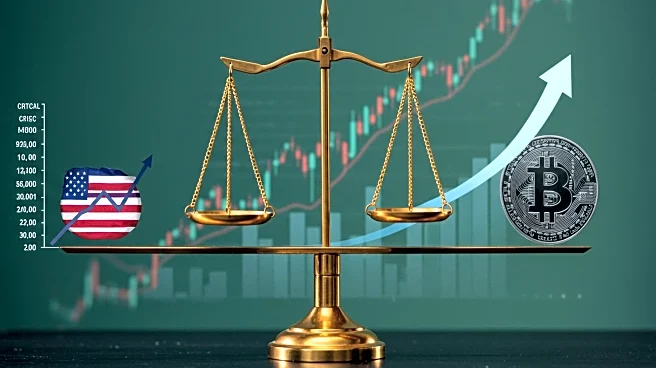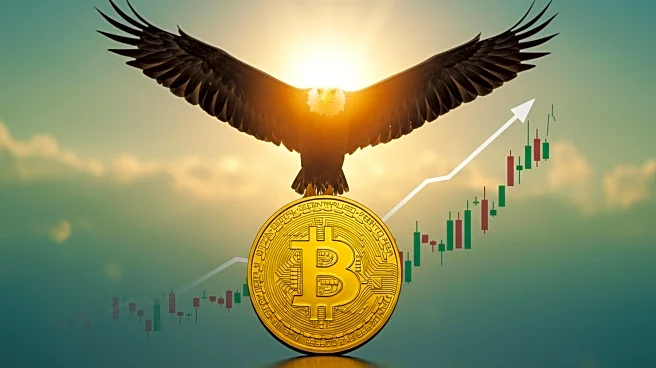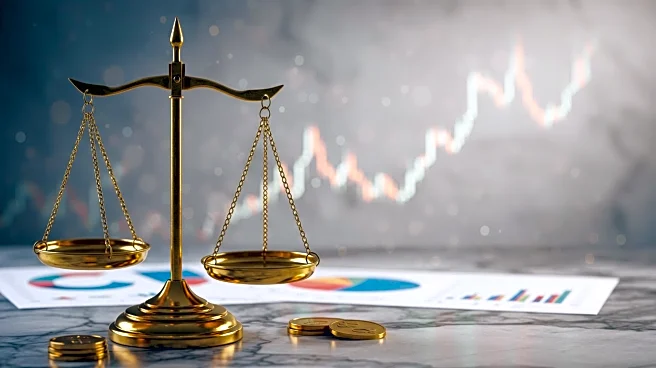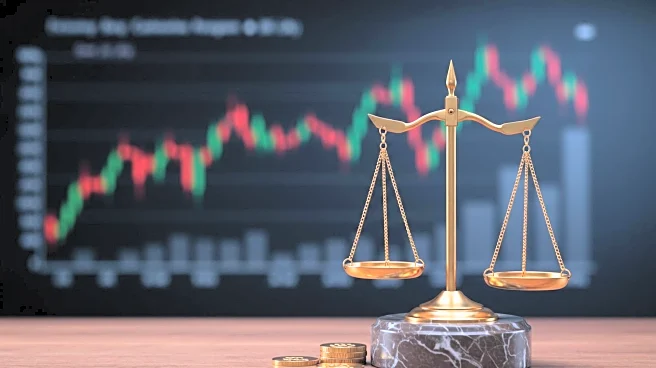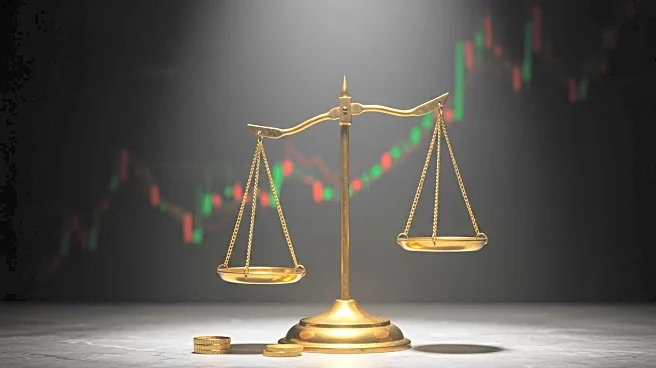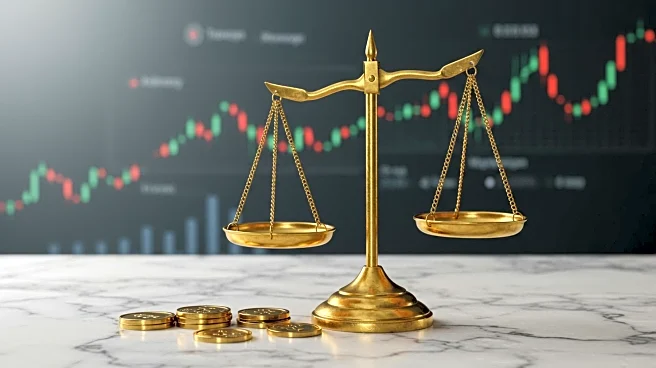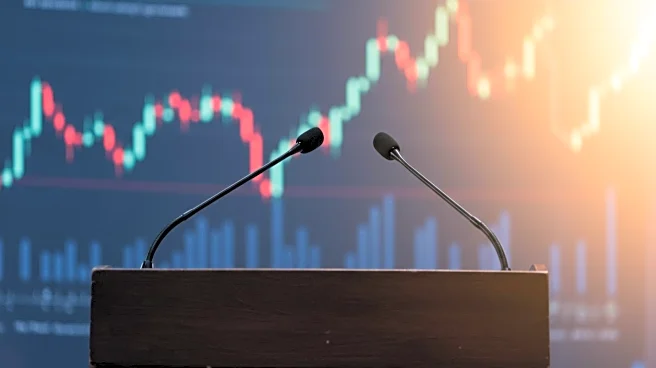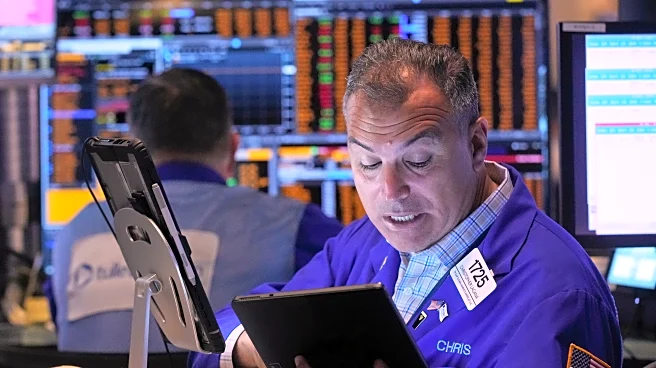What's Happening?
Federal Reserve Chair Jerome Powell indicated at the Jackson Hole Economic Policy Symposium that a rate cut might be necessary due to economic uncertainties, particularly in the labor market. Although he did not confirm a rate cut at the upcoming Federal Open Market Committee meeting, his comments led to a significant market reaction. The Dow Jones Industrial Average surged nearly 900 points shortly after his speech, with the S&P 500 and Nasdaq Composite also seeing gains. Powell noted a 'curious kind of balance' in the labor market, with both supply and demand for workers slowing, posing risks for employment. Despite a low unemployment rate of 4.2%, Powell warned of potential layoffs if the labor market weakens further. His remarks were interpreted as dovish, leading traders to adjust their expectations for a September rate cut.
Why It's Important?
Powell's comments have significant implications for U.S. economic policy and financial markets. A potential rate cut could stimulate economic activity by making borrowing cheaper, which may benefit businesses and consumers. However, it also reflects concerns about economic growth and labor market stability. The market's positive reaction suggests investor optimism about potential monetary easing, but it also highlights the fragility of current economic conditions. The possibility of rate cuts has also influenced the bond market, with Treasury yields falling as investors seek to lock in higher rates. Additionally, the U.S. dollar weakened against major currencies, indicating expectations of slower economic growth.
What's Next?
The Federal Reserve's next steps will be closely watched, particularly the September meeting, where a rate cut decision could be made. Internal disagreements among Fed officials about the timing and necessity of rate cuts add complexity to the situation. The outcome will have implications for financial markets, inflation, and economic growth. The crypto market, including Ethereum and Bitcoin, has also reacted positively to the prospect of rate cuts, with potential further gains if monetary policy becomes more accommodative.


